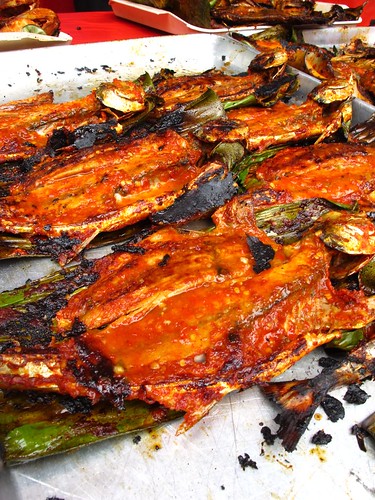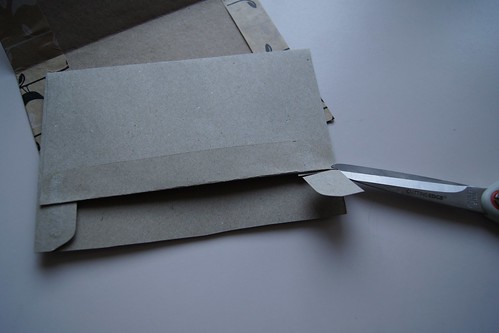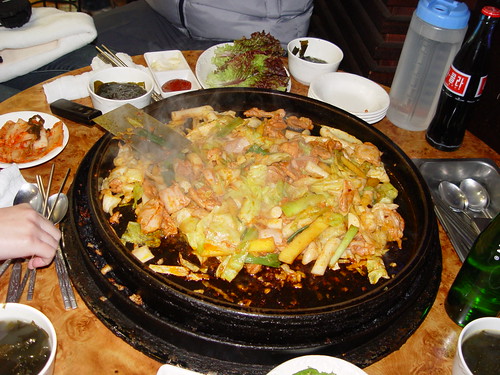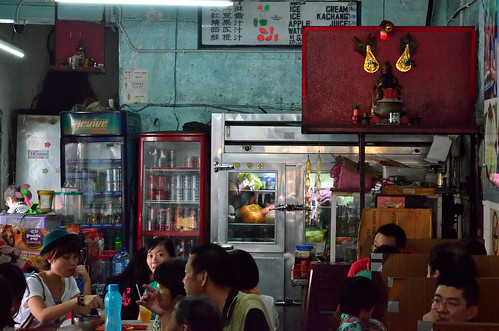Cool Barbecue Foods images
Check out these barbecue foods images:
We be grillin

Image by Clintus McGintus
Curried crabs

Image by byte
Ikan bakar @ Pasar Ramadhan Kelana Jaya

Image by veryliciousness
BBQed fish with chilli
Nice Recipes photos
A few nice recipes images I found:
Recipe Cards Booklet

Image by planningqueen
Recipe Cards Booklet

Image by planningqueen
Nice Family Meals photos
Some cool family meals images:
Lynch at Family and MWR Command SOS Training Conference, U.S. Army, 100808

Image by familymwr
PHOTO CAPTION: IMCOM Sarah Lynch stands with her husband Commanding General Lt. Gen. Lynch Rick Lynch as he speaks at the Survivor Outreach Services Annual Training Conference in August. (Photo by Rob McIlvaine, FMWRC Public Affairs, cleared for public release, not for commercial use, attribution requested.)
www.armymwr.com
SOS training conference shares best practices with global staff and partners
By Rob McIlvaine
FMWRC Public Affairs
ARLINGTON, Va. – Over 300 Survivor Outreach Services representatives from the Active Army, Reserves and National Guard converged on the nation’s capitol for their annual training during the second week of August.
The conference hosted team building opportunities so the Active Army, Army National Guard, Reserves, Casualty Assistance Centers’ staffs and SOS teams could share best practices with each other.
It also provided an opportunity for non-government organizations to meet SOS staff and provide insight on their work with survivors.
According to Donna Engeman, FMWRC SOS program manager, SOS is one of the Army Chief of Staff Gen. George W. Casey’s top priorities. Casey, who lost his father in Vietnam, developed the idea for a better support system for survivors of fallen service members in late 2006.
“Because taking care of survivors is one of Gen. Casey’s top priorities, it’s imperative that we have the right people in the SOS positions in the field. We also need to give them the best training, tools and resources possible in order for them to care for survivors,” Engeman said.
One of those tools introduced at this conference was a draft of the SOS Operations Manual.
“The Operations Manual provides guidance, sort of a standard operating procedure. Another purpose of the training was to update our team members on the latest changes in entitlements, policies and regulations regarding survivors,” Engeman said.
At the conference, Fort Hood’s SOS team and center were given the spotlight to tell their story and share what they’ve learned since their program became official in May, 2009.
Through the efforts of Lt. Gen. Lynch, who began growing and evolving survivor outreach while serving as III Corps and Fort Hood commander, was later tapped to be IMCOM commanding general by Army Chief of Staff Gen. George Casey,
“SOS is the most important program the Army has and the Fort Hood SOS program center is what ‘right looks like,’” Lynch told the gathered SOS representatives.
“We’re going to fully fund this program, and we’re going to increase output at a reduced cost. And you’re going to tell me if we’re doing the right thing for our Families of the fallen because it worries me to death that there might be one Family out there who fear they’ve been forgotten,” Lynch said.
But the Army can’t do it alone.
At the training, Lynch mentioned that volunteers, local businesses and nonprofits are ready, willing and available right outside the gate.
“The community wants to help. Private organizations want to help. We have to give them the opportunity to help. They know they enjoy freedom because of the sacrifices paid by Gold Star Families and they want to give back as much as they can,” Lynch said.
After Lynch secured a building large enough to allow expansion of Fort Hood’s SOS program, garrison funds only went so far.
Newly appointed SOS Program Manager Janeth Lopez immediately went out into the community to create program awareness. Soon after, furniture and appliances were donated, a Family room was improved and the adjoining kitchen took on a Family atmosphere.
“But when you go out to make presentations,” Fort Hood SOS Support Coordinator Connie McDonald said, “You won’t have to tell what you need. You’ll be asked, ‘what do you need,’ and ‘how can I help?’” McDonald said.
“Think about offering the possibility of sponsoring a meal if having a Family day or planting a tree of remembrance during an annual Family gathering, but be aware of your installation and its assets, such as trees needing lots of water. And know the regulations on what to tell people who want to donate,” McDonald said.
During August of last year, the Fort Hood SOS expanded into a larger facility that provided room for a growing staff and range of programs. This expansion also allowed for the creation of the Hall of Remembrance dedicated to the fallen heroes.
Survivors were asked to bring in or send an 8”x10” photo or artist’s rendering of their loved one to be framed and placed on the wall with a metal plaque.
McDonald provided information and guidance to the conference participants on how to manage a Hall of Remembrance, including tips from participants in focus groups such as “please don’t place the photo on the wall at a height that causes someone to look down.”
In fact, one of the “best practices” shared at the conference was the recommendation to use focus groups to ensure SOS programs are meeting the needs of the survivors.
“Some of the garrisons may have focus groups organized in order to receive survivor feedback on issues they face. At the Department of the Army level, we have the CSA’s Survivor Working Group which provides advice and comments on the SOS program,” Engeman said.
Another best practice shared is the creation of a record of fallen soldiers at the unit level.
“This register goes with the colors at the change of command ceremony and signifies that the fallen will forever be assigned to this command and the Families will continue to be part of this unit,” McDonald said.
“You are all advocates for our Soldiers and survivors. Make senior leaders realize that all of our Soldiers will be remembered for how they chose to live, not how they died,” McDonald said.
For more information, visit Army OneSource at www.myarmyonesource.com/familyprogramsandservices/familyp…
Connect with us:
www.Facebook.com/FamilyMWR
www.Twitter.com/FamilyMWR
www.YouTube.com/FamilyMWR
Lynch at Family and MWR Command SOS Training Conference, U.S. Army, 100808

Image by familymwr
PHOTO CAPTION: Sarah Lynch stands with her husband IMCOM Commanding General Lt. Gen. Lynch Rick Lynch as he speaks at the Survivor Outreach Services Annual Training Conference in August. (Photo by Rob McIlvaine, FMWRC Public Affairs, cleared for public release, not for commercial use, attribution requested.)
www.armymwr.com
SOS training conference shares best practices with global staff and partners
By Rob McIlvaine
FMWRC Public Affairs
ARLINGTON, Va. – Over 300 Survivor Outreach Services representatives from the Active Army, Reserves and National Guard converged on the nation’s capitol for their annual training during the second week of August.
The conference hosted team building opportunities so the Active Army, Army National Guard, Reserves, Casualty Assistance Centers’ staffs and SOS teams could share best practices with each other.
It also provided an opportunity for non-government organizations to meet SOS staff and provide insight on their work with survivors.
According to Donna Engeman, FMWRC SOS program manager, SOS is one of the Army Chief of Staff Gen. George W. Casey’s top priorities. Casey, who lost his father in Vietnam, developed the idea for a better support system for survivors of fallen service members in late 2006.
“Because taking care of survivors is one of Gen. Casey’s top priorities, it’s imperative that we have the right people in the SOS positions in the field. We also need to give them the best training, tools and resources possible in order for them to care for survivors,” Engeman said.
One of those tools introduced at this conference was a draft of the SOS Operations Manual.
“The Operations Manual provides guidance, sort of a standard operating procedure. Another purpose of the training was to update our team members on the latest changes in entitlements, policies and regulations regarding survivors,” Engeman said.
At the conference, Fort Hood’s SOS team and center were given the spotlight to tell their story and share what they’ve learned since their program became official in May, 2009.
Through the efforts of Lt. Gen. Lynch, who began growing and evolving survivor outreach while serving as III Corps and Fort Hood commander, was later tapped to be IMCOM commanding general by Army Chief of Staff Gen. George Casey,
“SOS is the most important program the Army has and the Fort Hood SOS program center is what ‘right looks like,’” Lynch told the gathered SOS representatives.
“We’re going to fully fund this program, and we’re going to increase output at a reduced cost. And you’re going to tell me if we’re doing the right thing for our Families of the fallen because it worries me to death that there might be one Family out there who fear they’ve been forgotten,” Lynch said.
But the Army can’t do it alone.
At the training, Lynch mentioned that volunteers, local businesses and nonprofits are ready, willing and available right outside the gate.
“The community wants to help. Private organizations want to help. We have to give them the opportunity to help. They know they enjoy freedom because of the sacrifices paid by Gold Star Families and they want to give back as much as they can,” Lynch said.
After Lynch secured a building large enough to allow expansion of Fort Hood’s SOS program, garrison funds only went so far.
Newly appointed SOS Program Manager Janeth Lopez immediately went out into the community to create program awareness. Soon after, furniture and appliances were donated, a Family room was improved and the adjoining kitchen took on a Family atmosphere.
“But when you go out to make presentations,” Fort Hood SOS Support Coordinator Connie McDonald said, “You won’t have to tell what you need. You’ll be asked, ‘what do you need,’ and ‘how can I help?’” McDonald said.
“Think about offering the possibility of sponsoring a meal if having a Family day or planting a tree of remembrance during an annual Family gathering, but be aware of your installation and its assets, such as trees needing lots of water. And know the regulations on what to tell people who want to donate,” McDonald said.
During August of last year, the Fort Hood SOS expanded into a larger facility that provided room for a growing staff and range of programs. This expansion also allowed for the creation of the Hall of Remembrance dedicated to the fallen heroes.
Survivors were asked to bring in or send an 8”x10” photo or artist’s rendering of their loved one to be framed and placed on the wall with a metal plaque.
McDonald provided information and guidance to the conference participants on how to manage a Hall of Remembrance, including tips from participants in focus groups such as “please don’t place the photo on the wall at a height that causes someone to look down.”
In fact, one of the “best practices” shared at the conference was the recommendation to use focus groups to ensure SOS programs are meeting the needs of the survivors.
“Some of the garrisons may have focus groups organized in order to receive survivor feedback on issues they face. At the Department of the Army level, we have the CSA’s Survivor Working Group which provides advice and comments on the SOS program,” Engeman said.
Another best practice shared is the creation of a record of fallen soldiers at the unit level.
“This register goes with the colors at the change of command ceremony and signifies that the fallen will forever be assigned to this command and the Families will continue to be part of this unit,” McDonald said.
“You are all advocates for our Soldiers and survivors. Make senior leaders realize that all of our Soldiers will be remembered for how they chose to live, not how they died,” McDonald said.
For more information, visit Army OneSource at www.myarmyonesource.com/familyprogramsandservices/familyp…
Connect with us:
www.Facebook.com/FamilyMWR
www.Twitter.com/FamilyMWR
www.YouTube.com/FamilyMWR
Lynch at Family and MWR Command SOS Training Conference, U.S. Army, 100808

Image by familymwr
PHOTO CAPTION: IMCOM Commanding General Lt. Gen. Lynch Rick Lynch speaks at the Survivor Outreach Services Annual Training Conference in August. (Photo by Rob McIlvaine, FMWRC Public Affairs, cleared for public release, not for commercial use, attribution requested.)
www.armymwr.com
SOS training conference shares best practices with global staff and partners
By Rob McIlvaine
FMWRC Public Affairs
ARLINGTON, Va. – Over 300 Survivor Outreach Services representatives from the Active Army, Reserves and National Guard converged on the nation’s capitol for their annual training during the second week of August.
The conference hosted team building opportunities so the Active Army, Army National Guard, Reserves, Casualty Assistance Centers’ staffs and SOS teams could share best practices with each other.
It also provided an opportunity for non-government organizations to meet SOS staff and provide insight on their work with survivors.
According to Donna Engeman, FMWRC SOS program manager, SOS is one of the Army Chief of Staff Gen. George W. Casey’s top priorities. Casey, who lost his father in Vietnam, developed the idea for a better support system for survivors of fallen service members in late 2006.
“Because taking care of survivors is one of Gen. Casey’s top priorities, it’s imperative that we have the right people in the SOS positions in the field. We also need to give them the best training, tools and resources possible in order for them to care for survivors,” Engeman said.
One of those tools introduced at this conference was a draft of the SOS Operations Manual.
“The Operations Manual provides guidance, sort of a standard operating procedure. Another purpose of the training was to update our team members on the latest changes in entitlements, policies and regulations regarding survivors,” Engeman said.
At the conference, Fort Hood’s SOS team and center were given the spotlight to tell their story and share what they’ve learned since their program became official in May, 2009.
Through the efforts of Lt. Gen. Lynch, who began growing and evolving survivor outreach while serving as III Corps and Fort Hood commander, was later tapped to be IMCOM commanding general by Army Chief of Staff Gen. George Casey,
“SOS is the most important program the Army has and the Fort Hood SOS program center is what ‘right looks like,’” Lynch told the gathered SOS representatives.
“We’re going to fully fund this program, and we’re going to increase output at a reduced cost. And you’re going to tell me if we’re doing the right thing for our Families of the fallen because it worries me to death that there might be one Family out there who fear they’ve been forgotten,” Lynch said.
But the Army can’t do it alone.
At the training, Lynch mentioned that volunteers, local businesses and nonprofits are ready, willing and available right outside the gate.
“The community wants to help. Private organizations want to help. We have to give them the opportunity to help. They know they enjoy freedom because of the sacrifices paid by Gold Star Families and they want to give back as much as they can,” Lynch said.
After Lynch secured a building large enough to allow expansion of Fort Hood’s SOS program, garrison funds only went so far.
Newly appointed SOS Program Manager Janeth Lopez immediately went out into the community to create program awareness. Soon after, furniture and appliances were donated, a Family room was improved and the adjoining kitchen took on a Family atmosphere.
“But when you go out to make presentations,” Fort Hood SOS Support Coordinator Connie McDonald said, “You won’t have to tell what you need. You’ll be asked, ‘what do you need,’ and ‘how can I help?’” McDonald said.
“Think about offering the possibility of sponsoring a meal if having a Family day or planting a tree of remembrance during an annual Family gathering, but be aware of your installation and its assets, such as trees needing lots of water. And know the regulations on what to tell people who want to donate,” McDonald said.
During August of last year, the Fort Hood SOS expanded into a larger facility that provided room for a growing staff and range of programs. This expansion also allowed for the creation of the Hall of Remembrance dedicated to the fallen heroes.
Survivors were asked to bring in or send an 8”x10” photo or artist’s rendering of their loved one to be framed and placed on the wall with a metal plaque.
McDonald provided information and guidance to the conference participants on how to manage a Hall of Remembrance, including tips from participants in focus groups such as “please don’t place the photo on the wall at a height that causes someone to look down.”
In fact, one of the “best practices” shared at the conference was the recommendation to use focus groups to ensure SOS programs are meeting the needs of the survivors.
“Some of the garrisons may have focus groups organized in order to receive survivor feedback on issues they face. At the Department of the Army level, we have the CSA’s Survivor Working Group which provides advice and comments on the SOS program,” Engeman said.
Another best practice shared is the creation of a record of fallen soldiers at the unit level.
“This register goes with the colors at the change of command ceremony and signifies that the fallen will forever be assigned to this command and the Families will continue to be part of this unit,” McDonald said.
“You are all advocates for our Soldiers and survivors. Make senior leaders realize that all of our Soldiers will be remembered for how they chose to live, not how they died,” McDonald said.
For more information, visit Army OneSource at www.myarmyonesource.com/familyprogramsandservices/familyp…
Connect with us:
www.Facebook.com/FamilyMWR
www.Twitter.com/FamilyMWR
www.YouTube.com/FamilyMWR
Cool Barbecue Foods images
Check out these barbecue foods images:
Ribs from Smokin’ Guns BBQ

Image by bmann
DSC03532

Image by earl258
春川雞 in korea sony F717
Hotpot at Red Panda, Coventry

Image by Dr Sam C
Nice Diet photos
Some cool diet images:
Char Kway Teow in Georgetown

Image by pmorgan
We lined up for longer than I felt was going to be worthwhile at the Joo Hooi Lane Cafe on Jalan Penang in the UNESCO World Heritage area of Georgetown, Penang, Malaysia. I have to admit the old woman made a fine Penang Char Kway Teow (although I am too innocent and mild in this area of food appreciation). And the crowded grimly surrounding changes after a few minutes into something more comfortable and lively. The chendol – the right brown sugar substrate – was great.
Bruce Davidson interviewed by The Guardian:
"What, I ask, has a lifetime of taking photographs taught him? "That often what makes a good picture is almost subliminal. It could be a look on a face or a detail on a piece of clothing. You just have to go with the flow sometimes. When I was a kid, I played baseball and you heard the sound the bat made when it really connected with the ball; you knew you had a great hit. It’s the same with photography: sometimes you hear that click of the shutter and you know you’ve caught something really special."
www.theguardian.com/artanddesign/2011/apr/24/bruce-davids…
This photo slowly became one of ‘my darlings’ and is therefore at risk of undue personal beautification and I know it isn’t perfect; too grainy etc. But I like the colours and the light. I learned a lot about printing too trying to get this right.

